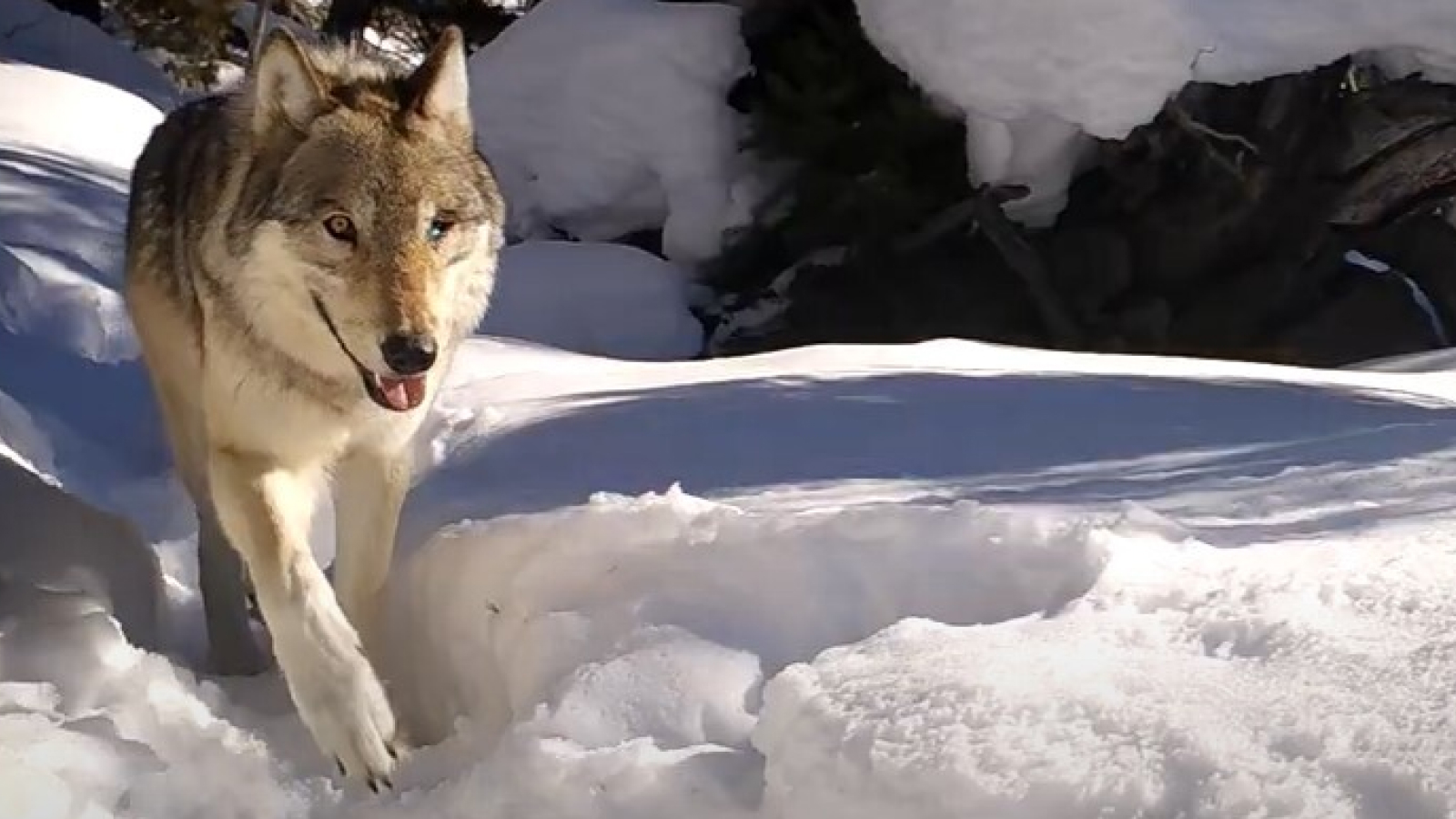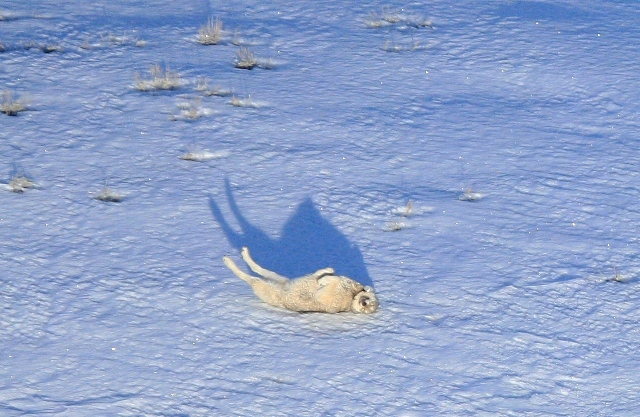'She is so old': One-eyed wolf in Yellowstone defies odds by having 10th litter of pups in 11 years
Wolf 907F recently gave birth to her 10th litter of pups, which researchers say is likely a Yellowstone National Park record.

The alpha female of a Yellowstone gray-wolf pack has defied the odds by having a 10th litter of pups at the age of 11.
The one-eyed wolf elder, named Wolf 907F, gave birth to her latest litter last month, the Cowboy State Daily reported. Gray wolves (Canis lupus) have an average life span of three to four years, so it's rare for them to reach 11, let alone have pups at that age.
Wolf 907F has given birth to pups every year for a decade straight since she became sexually mature, which Kira Cassidy, a research associate at the Yellowstone Wolf Project, said is likely a record for the wolves of Yellowstone National Park.
"Every day, I expect that she might die just because she is so elderly, but I've been thinking that for the last few years, and she keeps going," Cassidy told Live Science.
Cassidy has calculated that only about 1 in 250 wolves in Yellowstone make it to their 11th birthday, with just six recorded examples since wolves were reintroduced to the park in 1995. The oldest of all of these great elders lived to 12.5 years, according to the National Park Service.

Wolf 907F is the oldest wolf to have lived her whole life in the park's Northern Range, where there is more prey but also more competition from other wolves. Wolves rarely die of old age in the wild, and in Yellowstone National Park, the biggest threat is other wolves.
Sign up for the Live Science daily newsletter now
Get the world’s most fascinating discoveries delivered straight to your inbox.
"In a protected place like Yellowstone, their number-one cause of death is when two packs fight with each other," Cassidy said. "That accounts for about half of the mortality."
Wolf 907F is the alpha female of the Junction Butte pack, which has between 10 and 35 members at any given time. Cassidy noted that this is a large pack — the average wolf pack size is about 12 individuals — and that reduces the risk of being killed in territorial fights. Wolf 907F's experience also gives her pack an edge.
"Packs that have elderly wolves are much more successful in those pack-versus-pack conflicts because of the accumulated knowledge and the experience that they bring to that really stressful situation," Cassidy said.
Wolf 907F has likely boosted her pack's survival chances outside of battle, too. Cassidy noted that the Junction Butte pack rarely leaves Yellowstone's border and that Wolf 907F is "savvy" when it comes to things like crossing roads and avoiding humans.
What makes Wolf 907F even more impressive is that she does all of this with only one functioning eye. Researchers aren't sure what happened, but her left eye has been small and sunken since before she turned 4. "You would never know [when] watching her," Cassidy said.
Like other elders, Wolf 907F takes a back seat in hunts now that she's older, and she spends most of her day hanging around with the pack's pups. Cassidy and her colleagues have counted three pups in her current litter, which is smaller than the average litter size of four to five but not surprising. A 2012 study of Yellowstone wolves published in the Journal of Animal Ecology found that litter size declines with age.
"The fact that 907 is still having pups is amazing, and her litter being small is expected given that she is so old," Cassidy said.
A few of Wolf 907F's offspring now lead packs of their own, but most of her pups never reach adulthood due to the perilous nature of being a wolf. However, Wolf 907F and the others in the park don't seem to live like death is on their mind.
"They are happy to be with their family going from day to day," Cassidy said. "Even if they have injuries or are missing an eye or something really stressful is going on in their life, they move through that stress and go back to seemingly really enjoying their life."

Patrick Pester is the trending news writer at Live Science. His work has appeared on other science websites, such as BBC Science Focus and Scientific American. Patrick retrained as a journalist after spending his early career working in zoos and wildlife conservation. He was awarded the Master's Excellence Scholarship to study at Cardiff University where he completed a master's degree in international journalism. He also has a second master's degree in biodiversity, evolution and conservation in action from Middlesex University London. When he isn't writing news, Patrick investigates the sale of human remains.









